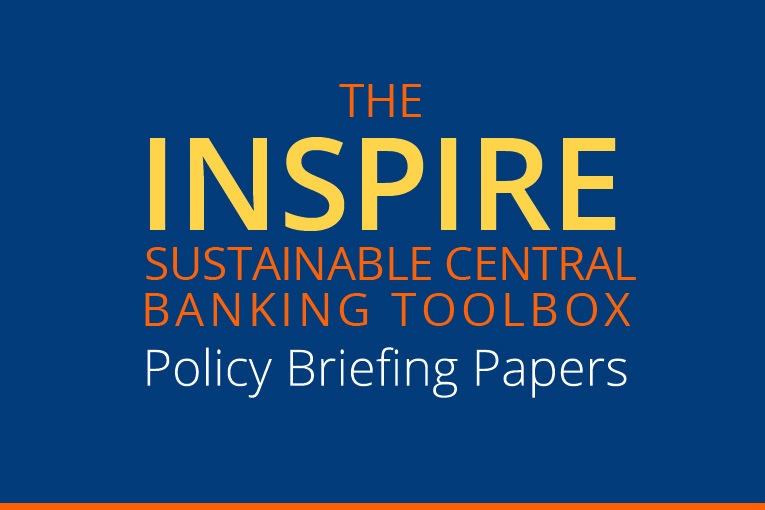Inflation and climate change: the role of climate variables in inflation forecasting and macro modelling

Download
INSPIRE Central Banking Toolbox – Policy Briefing no.1
To better understand the implications of climate-related risks for monetary policy, there is a need to strengthen the economic analysis of climate change, develop new statistical indicators and improve central banks’ macroeconomic models.
This policy briefing, the first in a new series of papers published as part of the INSPIRE Sustainable Central Banking Toolbox, reviews the potential pitfalls of using a modelling framework that omits climate-related information and provides some reflections on how central banks can integrate climate change considerations into their ‘workhorse’ models.
Main messages
- Climate change is increasingly affecting the objective, conduct and transmission of monetary policy. Yet, climate related shocks and trends are still generally absent from the canonical models used by central banks for their policy analysis and forecasting.
- Macroeconomic models that lack a representation of climate change are ill-suited to guide policymakers in a world that is rapidly warming and transitioning towards a low-carbon future.
- Climate-specific models and macroeconomic models are currently two independent areas that need to be bridged.
- The former are rich in climate-related risks but tend to represent the economy in a highly simplified way.
- The latter hold a great deal of sectoral detail on the economy but lack climate-related forces and generate relatively short-term projections.
- Limited availability of climate-related data has until recently prevented a major leap forward in modelling climate change, but this is now being addressed through a range of initiatives.
- There is no single climate model that works for all situations and all central banks, but different models can complement each other and fit different purposes.
- With the climate agenda becoming increasingly prominent, efforts to develop more comprehensive modelling frameworks have been scaled up. Several central banks have announced plans to develop tools to better understand the macroeconomic effects of climate risks.
Recommendations
- A promising climate-proofing strategy for central banks is a ‘suite-of-climate-models’ approach, which integrates a range of climate-related risks into their forecasting frameworks.
- Over the long run, climate change considerations should be integrated into the workhorse models, while keeping the suite of models as a hedge against uncertainty.
- Central banks should follow an interdisciplinary approach by collaborating with researchers from a wide range of academic disciplines, e.g. meteorologists, climate scientists and engineers.
- Scenario analysis can be used to assess climate-related risks in a way that acknowledges the various dimensions of uncertainty associated with analysing climate change.
- Central banks can improve the availability of better, more comprehensive climate-related data by supporting disclosure practices and information standards.
- The economic impact of other aspects of environmental degradation, such as the loss of biodiversity, are emerging considerations for central banks.
This paper is part of a toolbox designed to support central bankers and financial supervisors in calibrating monetary, prudential and other instruments in accordance with sustainability goals as they address the ramifications of climate change and other environmental challenges. The papers have been written and peer-reviewed by leading experts from academia, think tanks and central banks and are based on cutting-edge research, drawing from best practice in central banking and supervision.

